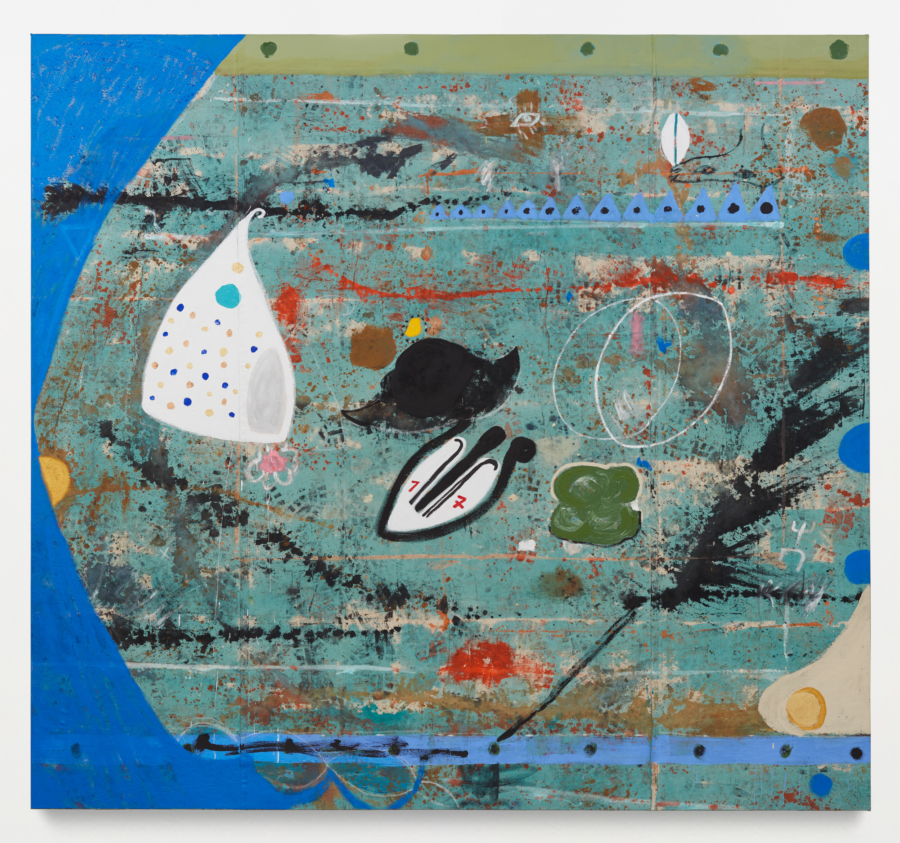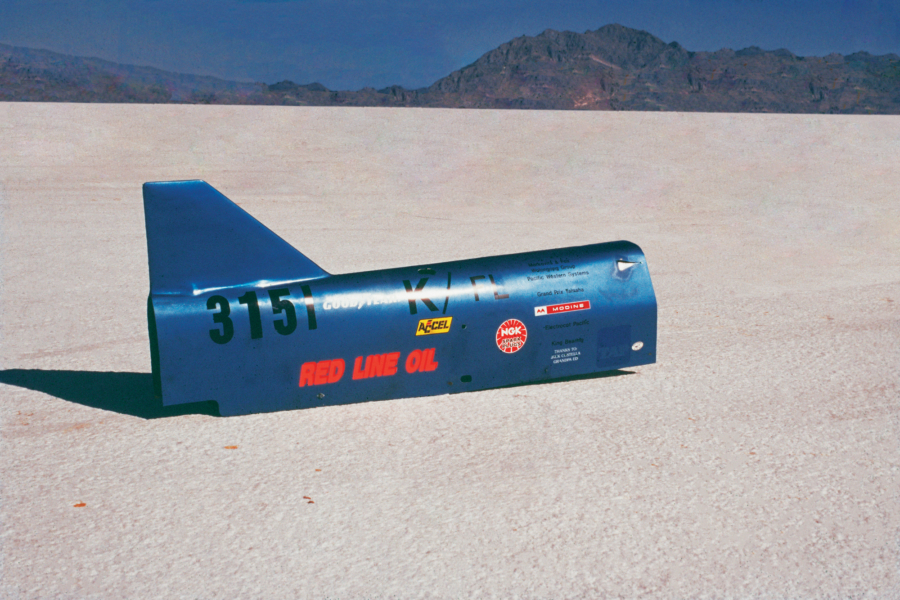Robert Grosvenor, published by Karma, New York, 2020.
Download as PDF
Robert Grosvenor is available here.
Far ahead of me, the salt flats and mountains conspired into one puddled vortex. I began to feel the size of this place. Or perhaps I did not feel it, but the cycle, whose tires marked its size with each turn, did. I felt a tenderness for them, speeding along under me.
For land speed records, each driver has the course to himself. You race by yourself, but your time is relative to whatever class you race in—in my case, unmodified 650 cc twins. No one else shares the course, so vehicles run endlessly throughout the day, a coming and going in the bright white heat, each calamity or success on the scale of individuals. There were two long lines, short course and long course. In the lines were every kind of car and bike, dragster cycles with eight-cylinder motors, streamliners like warheads put on wheels, the drivers coffined flat on their backs in tiny horizontal compartments, inches above the salt, and the elegant lakesters in polished aluminum, rounded and smooth like worn bars of soap, their fender skirts almost grazing the road. There were old-fashioned roadsters with gleaming new paint, roll bars, and big stenciled numbers on the doors. Vintage American muscle cars. A pink-and-yellow 1953 Chrysler Town & Country, a Technicolor mirage bouncing along on shot springs.
Every few minutes an engine screamed as a vehicle flew off the line, spewing a rooster tail of salt from under each rear tire. A few seconds into its run the vehicle began to float, its lower half warbled. Then the whole thing went liquid and blurry and was lost to the horizon.
One after another I watched the scream, the careen, the rooster tail, the float, and then the shimmer and wink off the edge of horizon, gone.
Careen, rooster tail, float, gone.
Careen, float, gone.
I was reminded, as I prepared to accelerate out of the start, of ski racing, and the many hundreds of moments I’d spent counting down seconds in the timing shack, my heart pounding, hunched at the start on the top of a course, squeezing the grips of my ski poles, planting and replanting them for the kick out of the start, surrounded by timing officials—always men, all men, but who took me seriously, spoke gravely about the imperfections of the course, what sorts of dangers to watch out for, a courtesy they gave every racer. At Bonneville, the sensations at the start were almost identical, the officials’ neutrality, the same people who surely had made this course, painted its three oil lines, dragged graders up and down it behind trucks, just as the officials at ski races prepped the course surface and set the gates. The beep of timing equipment, waiting to trip a red wire suspended over white. And the quality of light, pure reflecting white, like a snow-glinting morning above tree line.
The drivers collected along the curb near the café, some popping up onto the sidewalk, spoked wheels and hot exhaust pipes in one tangled mass under the orange neon letters cinZano. The shiny metal of gas tanks, fenders, carburetor covers, headlamp rings, and wheel rims sent the orange neon skidding over chrome and steel and suffusing everything—the atmosphere and the charge in the atmosphere, this feeling of sedition—in ember orange. For the first time in his life he found the neon, and the way it bathed those shiny machines parked below it, dazzling. Something was coalescing, an energy transfer from the cyclists to his own spirit. Life is here, he thought. It is happening now.



